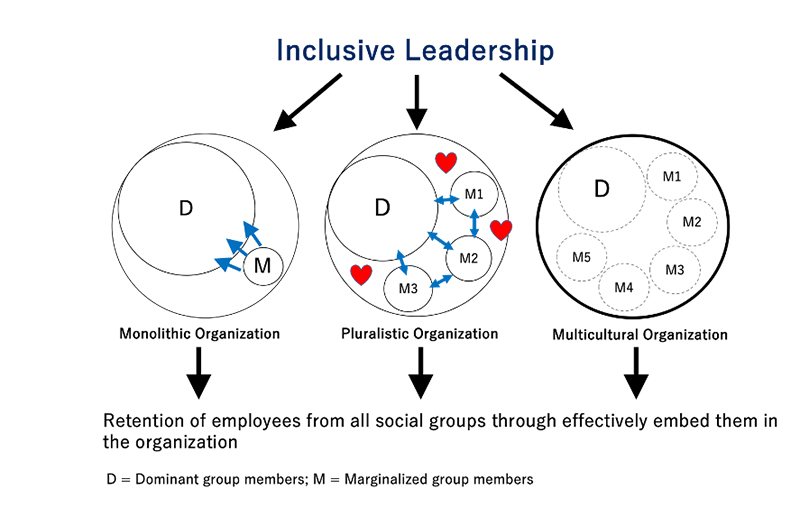To create diverse, equitable, and inclusive workplaces, retaining and motivating valued employees from all social groups is the key. However, for managers and leaders, that is quite challenging.
A research team led by Tomoki Sekiguchi at Kyoto University with two researchers at the University of Texas Rio Grande Valley developed a theoretical framework that helps managers and leaders to engage in "inclusive leadership" and promote "organizational embeddedness" of employees from all social groups to achieve diversity, equity, and inclusion.
Organizational embeddedness refers to the phenomenon that employees become embedded in their work organization through (1) increasing social connections in the workplace, (2) achieving compatibility in terms of values and needed skills, and (3) obtaining the resources they would not want to give up by leaving, all of which are the reason why employees stay and perform in their jobs.
"Managers and leaders who want to retain and motivate diverse employees should understand that employees from distinct social groups become embedded in their work organizations in different ways. In particular, diversity-related obstacles harm intergroup relations and the process of embedding employees. For example, employees from marginalized groups may take longer to become embedded, usually to lower degrees than employees from dominant groups," say the researchers.
By understanding the process and obstacles of organizational embeddedness, managers and leaders can speed up the embedding process and be more likely to retain valuable, diverse talent through inclusive leadership -- a set of practices that create an inclusive environment. However, how inclusive leaders should do differs across the stages of organizational demographic diversity.
In an organization largely homogeneous with a small number of marginalized groups (monolithic organizations), inclusive leaders should reduce hurdles for employees from marginal groups to be embedded by designing policies and practices to increase the representation and engagement of marginalized groups. They should also promote an inclusion mindset among the dominant group employees.
Intergroup conflicts prevent employees from being embedded in an organization with coexisting, dominant social groups and a moderate number of marginalized social groups in low hierarchical levels (pluralistic organizations). Thus, inclusive leaders should promote positive intergroup relations -- cooperative rather than hostile ones -- to enhance and accelerate the organizational embeddedness of employees from all social groups.
In an organization that is highly diverse at all hierarchical levels and has an inclusive environment (multicultural organizations), there are fewer obstacles for all social groups to be embedded. Inclusive leaders should maintain the organization's inclusive context by welcoming and valuing the perspectives of all social groups. They should also target all employees rather than particular groups by developing and implementing a diversity, equity, and inclusion strategy that makes each social category less salient.

Credit: KyotoU/Tomoki Sekiguchi
【DOI】
https://doi.org/10.1111/joms.12984
Debjani Ghosh, Jorge A. Gonzalez, Tomoki Sekiguchi (2023). Different Feathers Embedding Together: Integrating Diversity and Organizational Embeddedness. Journal of Management Studies.





